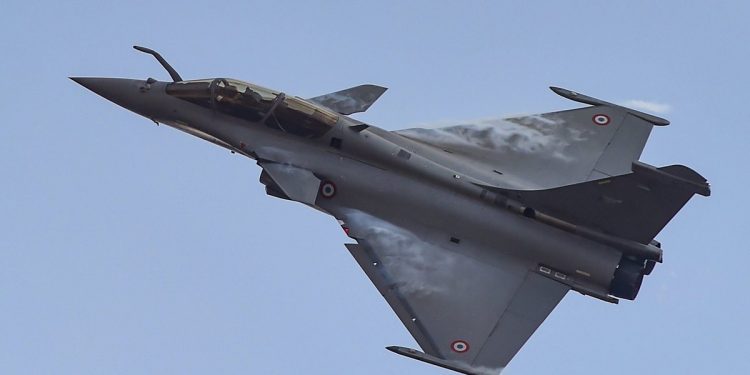New Delhi: India is likely to receive by July 27 the first batch of six Rafale fighter jets. The arrival of the fighter jets is expected to significantly boost the combat capability of the Indian Air Force (IAF). This was disclosed by people familiar with the development.
The IAF has been on a high alert for the last two weeks in view of escalation in tension with China. Tension is palpable along the Line of Actual Control (LAC) in eastern Ladakh. A few days back 20 Indian Army personnel were killed during the Galwan Valley face-off. The two armies are locked in a bitter standoff in the region for seven weeks.
French minister’s assurance
Sources said that June 2 Defence Minister Rajnath Singh held a telephonic conversation with his French counterpart Florence Parly. She conveyed that the Rafale jets will be delivered to India as scheduled notwithstanding the coronavirus pandemic in France.
Military officials, on condition of anonymity, said the arrival of Rafale jets will significantly enhance the IAF’s overall combat capability. It will also send a clear message to India’s ‘adversaries’. The IAF however, was not ready to officially comment on the issue.
Also read: https://www.orissapost.com/abhinandan-can-attack-pakistan-from-border-after-rafale-jp-nadda/
The first squadron of the aircraft will be stationed at Ambala air force station. It is considered one of the most strategically located bases of the IAF.
Total expenses
India had signed an inter-governmental agreement with France in September 2016 for procurement of 36 Rafale fighter jets. The total cost of procurement is approximately Rs 58,000 crore.
Weapons package
The aircraft is capable of carrying a range of potent weapons. European missile maker MBDA’s ‘Meteor’ beyond visual range air-to-air missile will be among the weapons. Also ‘Scalp’ cruise missile will be the mainstay of the weapons package of the Rafale jets
Besides the missile systems, the Rafale jets will come with various India-specific modifications. Those include Israeli helmet-mounted displays, radar warning receivers and low-band jammers. The aircraft will also have 10-hour flight data recording, infra-red search and tracking systems among others.
Boosting infrastructure
The IAF has already completed preparations, including readying required infrastructure and training of pilots, to welcome the fighter aircraft. The second squadron of Rafale will be stationed at Hasimara base in West Bengal. The IAF has spent around Rs 400 crore to develop infrastructure like shelters, hangars and maintenance facilities.
Out of the 36 Rafale jets, 30 will be fighter jets and six will be trainers. The trainer jets will be twin-seater and they will have almost all the features of the fighter jets.







































